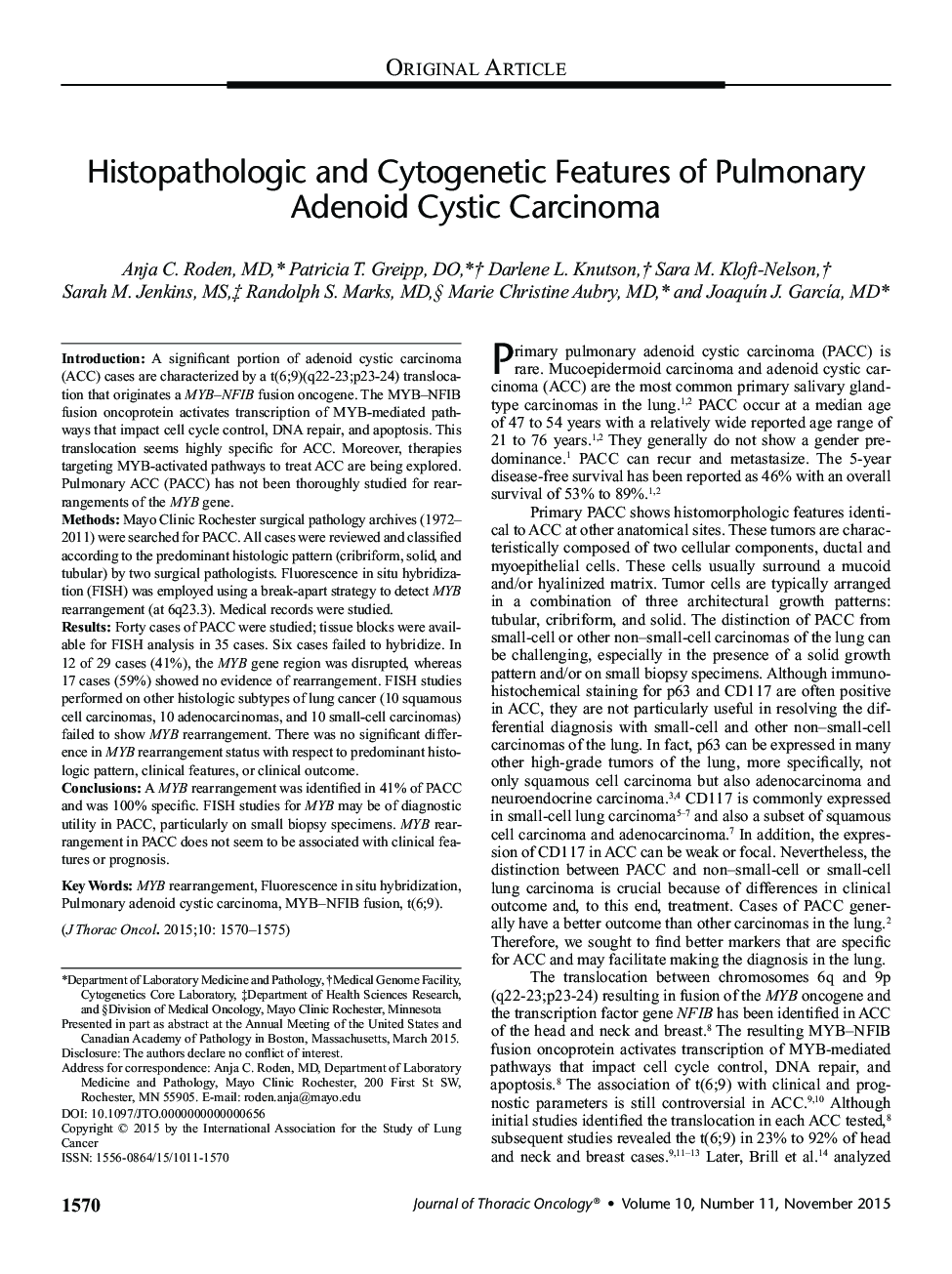| Article ID | Journal | Published Year | Pages | File Type |
|---|---|---|---|---|
| 3989529 | Journal of Thoracic Oncology | 2015 | 6 Pages |
IntroductionA significant portion of adenoid cystic carcinoma (ACC) cases are characterized by a t(6;9)(q22-23;p23-24) translocation that originates a MYB–NFIB fusion oncogene. The MYB–NFIB fusion oncoprotein activates transcription of MYB-mediated pathways that impact cell cycle control, DNA repair, and apoptosis. This translocation seems highly specific for ACC. Moreover, therapies targeting MYB-activated pathways to treat ACC are being explored. Pulmonary ACC (PACC) has not been thoroughly studied for rearrangements of the MYB gene.MethodsMayo Clinic Rochester surgical pathology archives (1972–2011) were searched for PACC. All cases were reviewed and classified according to the predominant histologic pattern (cribriform, solid, and tubular) by two surgical pathologists. Fluorescence in situ hybridization (FISH) was employed using a break-apart strategy to detect MYB rearrangement (at 6q23.3). Medical records were studied.ResultsForty cases of PACC were studied; tissue blocks were available for FISH analysis in 35 cases. Six cases failed to hybridize. In 12 of 29 cases (41%), the MYB gene region was disrupted, whereas 17 cases (59%) showed no evidence of rearrangement. FISH studies performed on other histologic subtypes of lung cancer (10 squamous cell carcinomas, 10 adenocarcinomas, and 10 small-cell carcinomas) failed to show MYB rearrangement. There was no significant difference in MYB rearrangement status with respect to predominant histologic pattern, clinical features, or clinical outcome.ConclusionsA MYB rearrangement was identified in 41% of PACC and was 100% specific. FISH studies for MYB may be of diagnostic utility in PACC, particularly on small biopsy specimens. MYB rearrangement in PACC does not seem to be associated with clinical features or prognosis.
